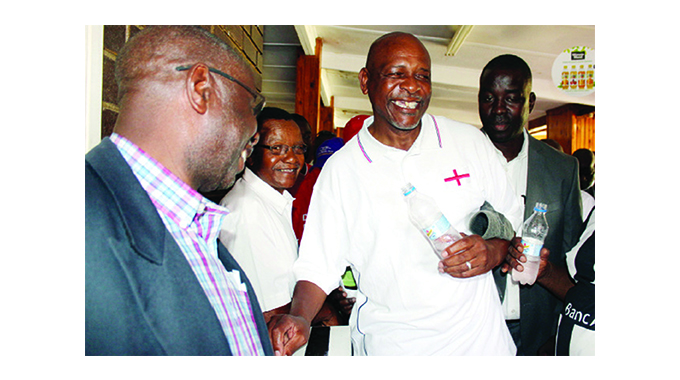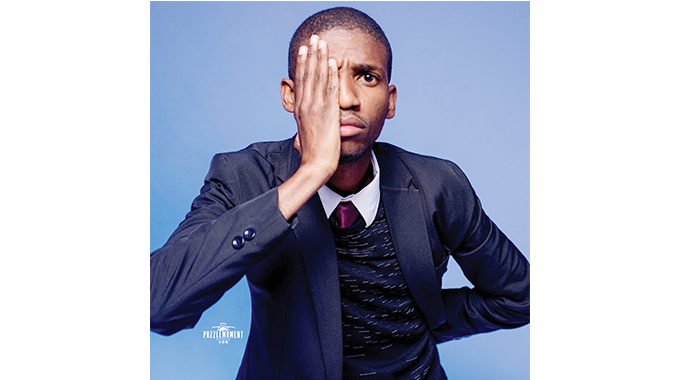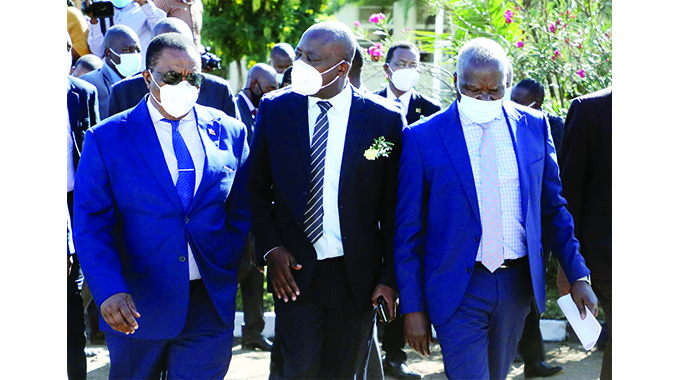Bosso tours: Motivation for players, important in club history

Lovemore Dube
TOURS have been very much part of Highlanders FC’s existence each yielding its own positives.
By that Bosso have cemented their place as probably the best side when it comes to accommodating players of different ethnic grounds. This was achieved from the club’s inception in 1926 with a player of Mixed Race in the set up between 1928 and 1937.
In travelling new friends are won, diversity embraced all adding to a better institution.
Lawrence Phiri who travelled so many times with Highlanders FC as a player and administrator said most of the tours were motivational.
“At the end of a successful season we often travelled to motivate players. We took along new players who were part of the next season’s squad. So many friends were created and new ideas picked up for the club,” said Phiri.
Today we look at some of the tours the club has undertaken and what has been achieved.
Between 1954 and 1966 Highlanders FC played in the Stanley and Livingstone Cup in Zambia with Wankie and Zambian clubs.
“We used to travel to Zambia for the Stanley and Livingstone Cup. We enjoyed the relations with those clubs and when there was the 1963 split which saw some Highlanders players and officials form Cobras, we benefitted from the relationship.
“Wankie helped us fundraise. They even released Andrew Scrupata Jele to join us as we went on a rebuilding exercise with players like Edward Dzowa standing out in leadership and on the field,” said Edward ‘Magungubala’ Dlamini in an interview recently.
Relations from that time saw successive Highlanders executives maintaining them with pre-season friendlies a regular feature and players easily moving either way.
In the 1970s, the charismatic Silas Ndlovu was instrumental in opening football relations which had a number of South African clubs touring the country. Among them were Germinston Callies, Moroka Swallows, Kaizer Chiefs and Orlando Pirates.
This paid dividends as a number of locals were able to join South African clubs. Sadly for the Bosso players, Ndlovu could not risk rocking relations with club faithful who worshipped him after his turn around successes beginning at the end of 1971 when he took over through the team’s first major cup success the 1973 Chibuku win and consecutive regional titles between 1973-75.
Zimbabweans were introduced to a delicate and skilful game close to Brazilians when they faced Jomo Sono, Ace Mnini, Ace Ngcobo, Shakes Mashaba, Ace Ntsolongoe, Patson Banda and Ryder Mofokeng.
On a historic trip to Zambia soon after Zimbabwe gained its Independence in 1980, Bosso strengthened their side with a number of players from the Colliery.
They were still fresh from the South Zone sojourn that lasted two years and the National Professional Soccer League of 1979 which was split into regional action. In a bid not to embarrass Amahlolanyama sought to balance their team by adding Hwange stalwarts Nyaro Mumba, David Khumalo and Rodrick Simwanza.
The close ties saw Wankie FC loan out Simwanza and Barton Mwalukuka to try and save a desperate Highlanders FC from relegation in 1983.
Bosso made several trips to Botswana. These tended to be more like shopping visits as the standard of the game was very low in the neighbouring country in the early 1980s.
But the return matches were good. They allowed Highlanders a chance to try out new players without giving away anything to local opposition.
In 1985 Highlanders visited Swaziland. Sibekiwe Khumalo, a founding mother of women’s football and among the first to travel to the team’s away matches, last month said they were motivated by what they saw in Swaziland.
They found the girls in that country playing football. It would be three years later that Highlanders Royals would come into being. The Royals of 1988-93, rate among the best women’s football teams ever assembled spoken highly like New Orleans, Mufakose Queens, Inline Academy and Black Rhinos.
Ever the club with many firsts, Highlanders became the first Zimbabwean club to tour Europe. This being in 1987 and this paved way for a donation of assets that were added to properties like Hotel California in Luveve, the clubhouse and the Robert Mugabe Way offices.
Three senior players and not only club football legends but Zimbabwe ones, the irrepressible Madinda Ndlovu, Tito Paketh and Willard Khumalo got a chance to play in Germany up to 1991.
What probably the club failed to harness was real professional playing opportunities for its players for the future.
But the 1990 Under-19 tour to Aberdeen, a combined select with neighbours Zimbabwe Saints, was to be the most significant of all the team’s travels. This one had been a follow up to the 1987 participation in which Makheyi Nyathi and Nqobizitha Maenzanise impressed.
In the 1990 tour Coventry City discovered arguably Zimbabwes best player after Independence, Peter ‘Nsukuzonke’ Ndlovu. His records at Bosso juniors, first team, Coventry and all levels of the national teams speak volumes of the legend.
He still holds the record of the longest surviving African player in the tough English elite league.
But it is in African competitions in which the safaris have been a constant pain in a club that has had four former players plying their trade in the tough British top division – Benjani Mwaruwari, Bruce Grobbelaar, Marvellous Nakamba and Ndlovu.
As Tshilamoya celebrates its 95th birthday this year, the countdown to 2026 when they hit a century, would be sweeter with a Champions League group qualification.











Comments